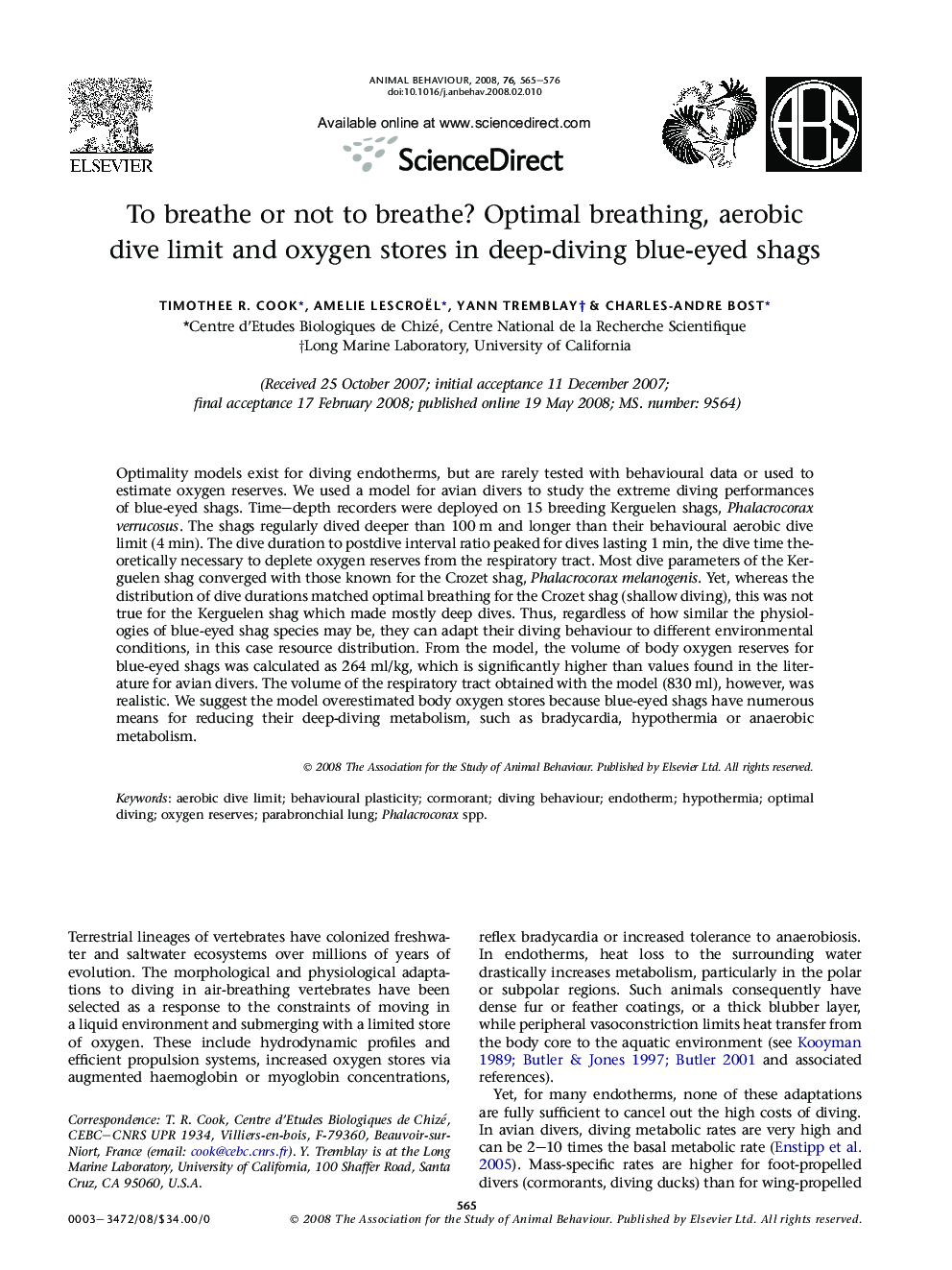| Article ID | Journal | Published Year | Pages | File Type |
|---|---|---|---|---|
| 2418802 | Animal Behaviour | 2008 | 12 Pages |
Optimality models exist for diving endotherms, but are rarely tested with behavioural data or used to estimate oxygen reserves. We used a model for avian divers to study the extreme diving performances of blue-eyed shags. Time–depth recorders were deployed on 15 breeding Kerguelen shags, Phalacrocorax verrucosus. The shags regularly dived deeper than 100 m and longer than their behavioural aerobic dive limit (4 min). The dive duration to postdive interval ratio peaked for dives lasting 1 min, the dive time theoretically necessary to deplete oxygen reserves from the respiratory tract. Most dive parameters of the Kerguelen shag converged with those known for the Crozet shag, Phalacrocorax melanogenis. Yet, whereas the distribution of dive durations matched optimal breathing for the Crozet shag (shallow diving), this was not true for the Kerguelen shag which made mostly deep dives. Thus, regardless of how similar the physiologies of blue-eyed shag species may be, they can adapt their diving behaviour to different environmental conditions, in this case resource distribution. From the model, the volume of body oxygen reserves for blue-eyed shags was calculated as 264 ml/kg, which is significantly higher than values found in the literature for avian divers. The volume of the respiratory tract obtained with the model (830 ml), however, was realistic. We suggest the model overestimated body oxygen stores because blue-eyed shags have numerous means for reducing their deep-diving metabolism, such as bradycardia, hypothermia or anaerobic metabolism.
